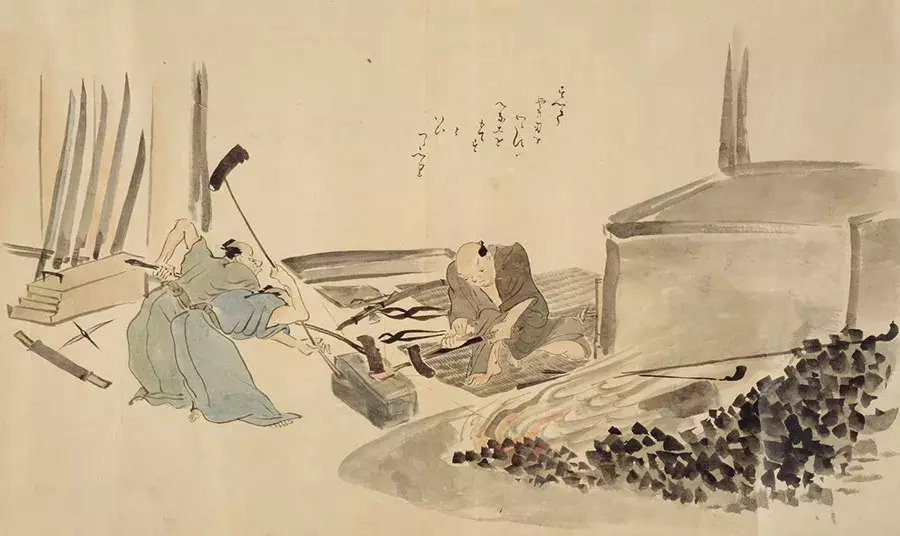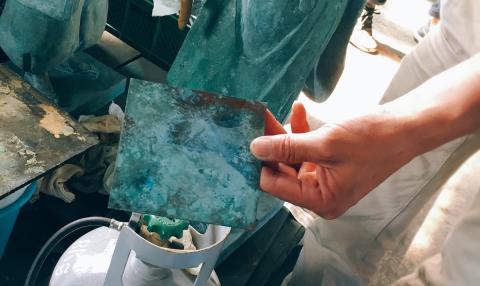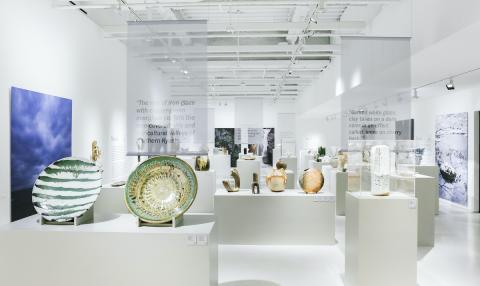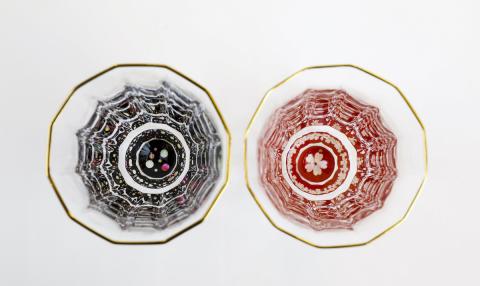
Glass is known for its fragility, metal for its rugged strength, but both of these materials reveal their multiple identities through the brilliance of Japanese craftsmanship. While many of Japan’s most instantly recognizable traditional crafts center on materials like wood, paper, textiles, and ceramics, metal and glass have also been transformed into exquisite craft products famed around the world today. In honor of Traditional Craft Products Month, designated in 1984 by Japan’s Ministry of Economy, Trade and Industry (METI), it’s an ideal time to consider the diversity of Japanese craft, and the fascinating histories of metal and glass as mediums for artisans around the country, in the past and present.
Echizen Uchihamono, courtesy of Japanese Traditional Crafts Aoyama Square
Archaeologists have determined that as far back as the Yayoi period (300 BCE to 300 CE), metalwork was practiced in Japan – at first, iron casting, which was used for fabricating farming tools, and later for swordsmithing. Swords became their own distinct craft form to serve the needs of warriors (most famously the samurai military class that emerged in the late 12th century). Eventually, many artisans and foundries specializing in swords branched out into creating other types of bladed tools – like kitchen cutlery. For instance, the regions of Tosa and Echizen (present-day Kochi and Fukui prefectures, respectively) were dedicated to producing weaponry during the tumultuous 15th and 16th centuries, but later transitioned into making exceptional knives for cooking, art, and gardening.
Other forms of metalwork were continually innovated for the purposes of agriculture, art, religion, and everyday domestic life. Specialties varied by region, with certain cities or former feudal seats becoming prominent for different materials or techniques – many of which still are renowned for that product today.
Nambu Tekki, courtesy of Japanese Traditional Crafts Aoyama Square
Nambu ironware, for example, hails from present-day Iwate Prefecture, and was first developed in the mid-1600s at the behest of a feudal lord who sought to promote the the tea ceremony in aristocratic society. He compelled a master teakettle caster Koizumi Nizaemon to move from Kyoto to Nambu to produce kettles. This foundry was passed down through generations of the Koizumi family, who eventually pioneered new forms such as a smaller teakettle that was even more popular among the masses. Nambu ironware teakettles are known for their arare, the roughly textured patterns on the exterior, that help with efficient heating by increasing the surface area of the kettle. They bear the personalized touch of each artisans’ signature pattern.

Takaoki doki
Another region of Japan is famous for other metals like copper, tin, and alloys like bronze, as well as iron. Around the start of the Edo period (1603-1868) in 1611, the lord of Takaoka Castle, then in Kaga domain (present-day Toyama prefecture) founded a casting plant with the expertise of seven of the best casting experts in the realm. Takaoka soon became a hub for iron-casting, for everything from farm tools to bells and statuary for Buddhist temples. In the 19th century, the region began copper production as well, and soon was exhibiting its copperware as objets d’art in Europe, spurring a vogue for Japanese aesthetics and a new market for export products. Like much metalwork, the process for making Takaoka doki (Takaoka copperware) is a painstaking and sometimes dangerous one, involving first the production of the sand mold, followed by refining the iron, copper or tin material, casting the molten metal at scorching temperatures, cooling, and finally polishing, carving, inlaying, hammering, and decoration. Similar to the process with tin, the resulting products are often surprisingly delicate – such as vases, wind chimes, and hammered copper jewelry that seem lighter than air.

On the flipside, sometimes glass, however breakable, belies a surprising strength and longevity. While ceramics have been produced in Japan for millennia and have been highly refined for many centuries [to read more on the long history of ceramics, see “Vessels of Culture”], transparent glass is of a more recent vintage. While ceramics are made from clay and other earth elements and are opaque, clear glass is typically formed from silica (the primary content of sand), limestone, and ash that is melted at high temperatures and rapidly cooled. There is proof of some clear glass production occurring in Japan as early as the Kofun period (around 300 to 538 AD), but it remained incredibly rare, difficult, and costly up until the Edo period (1603-1868), when new techniques and expanding consumer culture allowed glass manufacturing to flourish. Around the capital of Edo itself (present-day Tokyo), artisans set up firms to create many new glass products for a booming market, ranging from mirrors to eyeglasses to tableware. In 1834, a distinctive method of “cut glass” using emery powders to etch detailed patterns was pioneered by artisan Kyubei Kagaya, leading to what is now known as “Edo kiriko” glassware. As international trade opened up in the Meiji era (1868-1912), Edo kiriko cups became a major product for export, driving more industry around glass manufacturing in Tokyo – still all largely handmade. Today, many of these firms still exist and use the same finely-honed Edo kiriko techniques- crafting delicate yet strong tumblers, vases, and other glassware in vibrant jewel tones like red, blue, plum, with intricate patterns etched into their surface that can evoke natural motifs such as bamboo baskets, chrysanthemum blossoms, or even the geometric arrangement of fish eggs (nanako). Other regions are known for their own variations of cut glass, such as Satsuma kiriko (historically produced in Kagoshima and discontinued due to military conflicts at the end of the Edo period; later revived with painstaking reproductions), of colorful hand-blown glass (like Tsugaru vidro in Aomori), and of high-strength glass (like the incredibly thin Usuhari glass spun off from lightbulb production at Tokyo’s Shotoku Glass since 1922).

Raden glass by Amano Shikki
In recent years, glass has also been integrated with other traditional crafts in exciting ways – for example, raden, a technique utilizing mother-of-pearl inlays. Besides metalwork, Takaoka city has also been a historic center for lacquerware; one of its most prominent firms since 1892 is Amano Shikki. For more than a century, the company had been crafting high-end lacquer trays, boxes, and decoration, often involving raden, the meticulous patterns of inlaid flakes of mother-of-pearl from abalone and shells. In 2009, the company’s fifth-generation artisan Shinichi Amano began experimenting with raden glass, allowing the iridescent “rainbow” effect of the intricate shell designs to shimmer through the glass. Since 2012, Amano Shikki’s raden glass indicates an inspiring new era of hybrid craft, in this case combining the heritage of fine glass and raden artistry in a unique product that has been displayed as an art object, as well as a functional tableware.
Glass and metal have evolved as key materials in the history of Japanese craft – and continue to reveal new possibilities for contemporary and future artisans to build on. Whether it’s the flexible yet strong surface of paper-thin copper from Takaoka, or the solid yet fragile etchings on an Edo kiriko glass, these base elements show that they can transform in ever surprising ways. Like the most profound craft traditions, these objects can be a work of art, as well as a functional part of everyday life – in the process, showing the porous boundary between the two.
*Reference: Kuwagata, K. (Kitao, M.), & Kyokaen (Shokusanjin), (19th century), Shokuninzukushiekotoba, scroll #2, collection of National Diet Library

